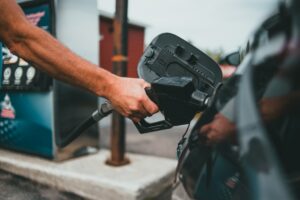Click or Press enter to Enter to Enable skip content option
Please Select a Section to Skip to

With gas prices hovering near all-time highs, motorists around the country are looking everywhere they can to get a little bit of relief at the pump.
Stations may vary incrementally on pricing, but the time it takes to find a so-called “good deal” might be better spent with some simple adjustments to your driving behavior. Here are five suggestions that could help you save on gas:
Driving at a steady pace near the speed limit is a great way to maximize fuel economy. When the vehicle does not accelerate, the power is simply equal to the resistance overcome. That’s physics way of saying you should go gentle on the gas pedal and take your time reaching a comfortable cruising speed. The optimal speed at which an engine can be run while consuming the least amount of gas is typically 55-65mph. When driving in the city, you can also try to maintain a constant speed line while navigating city traffic in order to minimize gas consumption.
Tailgating will result in increased gas consumption. When tailgating, drivers frequently hold the brakes to keep a safe distance from the vehicle in front of them. At the same time, they may press the gas pedal to accelerate before braking. Frequent speed changes use more gas than driving at a safe distance and constant speed. Recurring braking converts gas into excess heat, wasting energy and drastically reducing brake life. Most vehicles will be equipped with new energy-saving systems that convert the heat generated during braking into reusable energy in the future. However, for the time being, this technology has not been extended to single-powered vehicles.
Many people who have been driving for a long time are still perplexed as to how the air conditioning system works. Warm air is generated by the engine’s heat but cold air needs to be made with gas. Some take this into account and open the windows as the car accelerates, but this strategy can backfire as the wind coming into the car can create drag and cause the engine to work harder and burn more precious fuel.
Many drivers are unaware that if the overall air pressure of the vehicle’s tires is balanced, the vehicle can drive smoothly on the road. As a result, it will not be necessary to overconsume gas. Otherwise, regardless of the driver’s skill level, the vehicle’s gas consumption will be higher than usual. Tire pressure can be monitored manually with a gauge, and most newer cars come with sensors that provide pressure readings in real time. Considering that condensed air is usually free, it’s a no-brainer to take advantage of it and save on gas.
To save gas, avoid putting unnecessary items inside the vehicle, which will increase the weight of the vehicle. A tire’s weight can consume an extra liter of gasoline when driving 100 kilometers, especially in the city. If you must load supplies, make sure to place them in the compartment rather than strapping them to the roof rack. Placing items on the roof of the vehicle increases forward resistance and makes acceleration more difficult, increasing gas consumption even more.
While great effort is made to ensure the accuracy of the information on this site, errors can occur. Please verify all pricing information with a customer service representative. This is easily done by calling us or visiting us at the dealership.
Customer may not qualify for ALL Rebates shown. Some rebates are stackable and others can and cannot be combined. See Dealer For Complete Details.